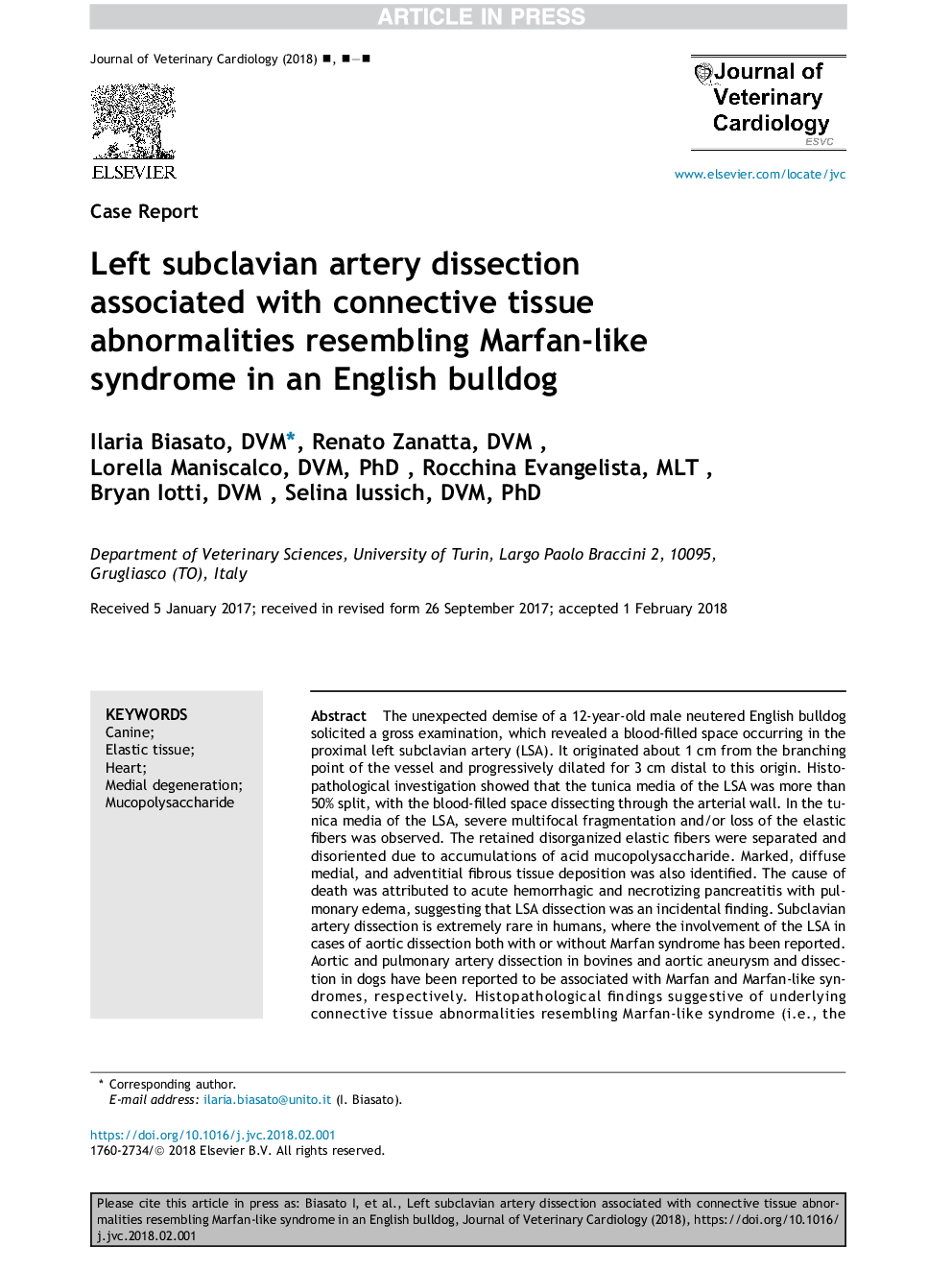| Article ID | Journal | Published Year | Pages | File Type |
|---|---|---|---|---|
| 8484505 | Journal of Veterinary Cardiology | 2018 | 7 Pages |
Abstract
The unexpected demise of a 12-year-old male neutered English bulldog solicited a gross examination, which revealed a blood-filled space occurring in the proximal left subclavian artery (LSA). It originated about 1Â cm from the branching point of the vessel and progressively dilated for 3Â cm distal to this origin. Histopathological investigation showed that the tunica media of the LSA was more than 50% split, with the blood-filled space dissecting through the arterial wall. In the tunica media of the LSA, severe multifocal fragmentation and/or loss of the elastic fibers was observed. The retained disorganized elastic fibers were separated and disoriented due to accumulations of acid mucopolysaccharide. Marked, diffuse medial, and adventitial fibrous tissue deposition was also identified. The cause of death was attributed to acute hemorrhagic and necrotizing pancreatitis with pulmonary edema, suggesting that LSA dissection was an incidental finding. Subclavian artery dissection is extremely rare in humans, where the involvement of the LSA in cases of aortic dissection both with or without Marfan syndrome has been reported. Aortic and pulmonary artery dissection in bovines and aortic aneurysm and dissection in dogs have been reported to be associated with Marfan and Marfan-like syndromes, respectively. Histopathological findings suggestive of underlying connective tissue abnormalities resembling Marfan-like syndrome (i.e., the appearance of the elastic tissue and the degenerative changes of the tunica media) were detected in the first case of LSA dissection in dogs and veterinary medicine, herein described.
Related Topics
Life Sciences
Agricultural and Biological Sciences
Animal Science and Zoology
Authors
Ilaria DVM, Renato DVM, Lorella DVM, PhD, Rocchina MLT, Bryan DVM, Selina DVM, PhD,
